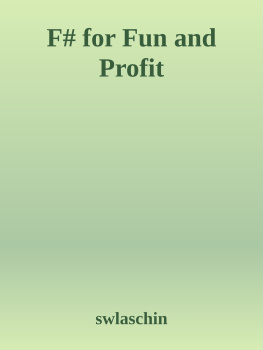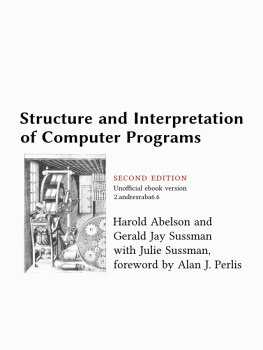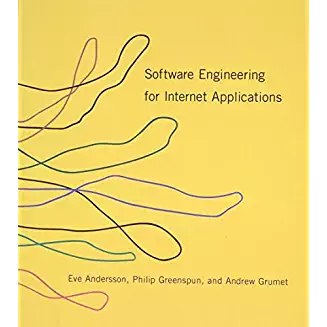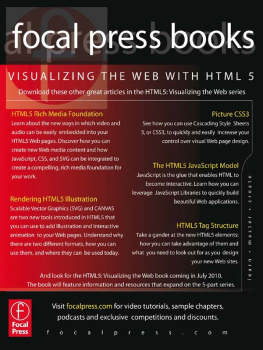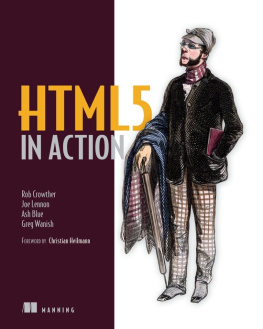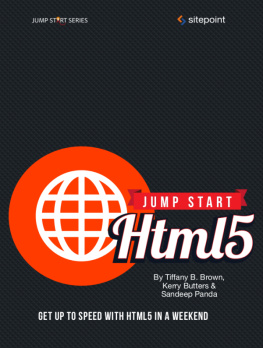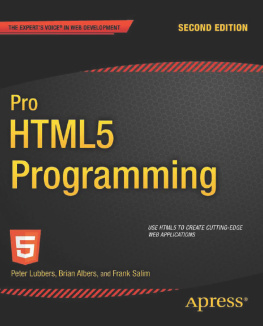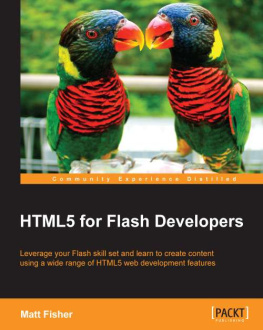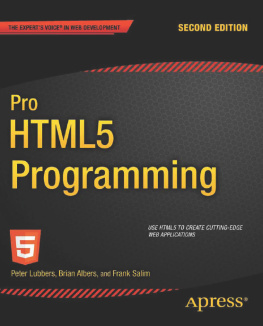it-ebooks - HTML5 Specification
Here you can read online it-ebooks - HTML5 Specification full text of the book (entire story) in english for free. Download pdf and epub, get meaning, cover and reviews about this ebook. year: 2016, publisher: iBooker it-ebooks, genre: Computer. Description of the work, (preface) as well as reviews are available. Best literature library LitArk.com created for fans of good reading and offers a wide selection of genres:
Romance novel
Science fiction
Adventure
Detective
Science
History
Home and family
Prose
Art
Politics
Computer
Non-fiction
Religion
Business
Children
Humor
Choose a favorite category and find really read worthwhile books. Enjoy immersion in the world of imagination, feel the emotions of the characters or learn something new for yourself, make an fascinating discovery.

HTML5 Specification: summary, description and annotation
We offer to read an annotation, description, summary or preface (depends on what the author of the book "HTML5 Specification" wrote himself). If you haven't found the necessary information about the book — write in the comments, we will try to find it.
HTML5 Specification — read online for free the complete book (whole text) full work
Below is the text of the book, divided by pages. System saving the place of the last page read, allows you to conveniently read the book "HTML5 Specification" online for free, without having to search again every time where you left off. Put a bookmark, and you can go to the page where you finished reading at any time.
Font size:
Interval:
Bookmark:

A vocabulary and associated APIs for HTML and XHTML
Please check the errata for any errors or issues reported since publication.
This specification is also available as a .
Copyright ? 2014 W3C? (MIT, ERCIM, Keio, Beihang), All Rights Reserved. W3C liability, trademark and document use rules apply.
This specification defines the 5th major revision of the core language of the World Wide Web: the Hypertext Markup Language (HTML). In this version, new features are introduced to help Web application authors, new elements are introduced based on research into prevailing authoring practices, and special attention has been given to defining clear conformance criteria for user agents in an effort to improve interoperability.
This section describes the status of this document at the time of its publication. Other documents may supersede this document. A list of current W3C publications and the latest revision of this technical report can be found in the W3C technical reports index at http://www.w3.org/TR/.
The W3C HTML Working Group is the W3C working group responsible for this specification's progress. This specification is the 28 October 2014 Recommendation.
If you wish to make comments regarding this document in a manner that is tracked by the W3C, please submit them via our ), and arrangements will be made to transpose the comments to our public bug database. All feedback is welcome.
A comprehensive test suite for this specification is maintained and kept up to date as part of the WebPlatform Tests project. Please see the Working Group's implementation report.
Work on evolutions of this specification proceeds at http://www.w3.org/TR/html/. The HTML5 Recommendation represents a milestone in the development of HTML but far from being the end of the road and improvements are already well under way. It is possible that future versions will no longer be published as a monolithic specification but rather as a set of smaller modules. Irrespective of whether that is the case or not, http://www.w3.org/TR/html/ will be maintained as the entry point to the entirety of HTML technology.
Work on extending this specification typically proceeds through extension specifications which should be consulted to see what new features are being reviewed.
The bulk of the text of this specification is also available in the WHATWG HTML Living Standard, under a license that permits reuse of the specification text.
This document has been reviewed by W3C Members, by software developers, and by other W3C groups and interested parties, and is endorsed by the Director as a W3C Recommendation. It is a stable document and may be used as reference material or cited from another document. W3C's role in making the Recommendation is to draw attention to the specification and to promote its widespread deployment. This enhances the functionality and interoperability of the Web.
Work on this specification is also done at the WHATWG. The W3C HTML working group actively pursues convergence of the HTML specification with the WHATWG living standard, within the bounds of the W3C HTML working group charter. There are various ways to follow this work at the WHATWG:
- Commit-Watchers mailing list (complete source diffs): http://lists.whatwg.org/listinfo.cgi/commit-watchers-whatwg.org
- Annotated summary with unified diffs: http://html5.org/tools/web-apps-tracker
- Raw Subversion interface:
svn checkout http://svn.whatwg.org/webapps/
The following editorial changes were made since Proposed Recommendation:
- The manner in which updates to this specification will be published was clarified.
- The IANA registration for was accepted during PR, leading to a small update to the corresponding section.
- "Decoder error" was mistakenly listed as a URL-related definition when it is in fact Encoding-related
- "Parsed URL" has been given a proper mapping to the URL specification
- Improved the informative summary for several elements. (Mostly pointers to tag omission and ARIA rules.)
- Updated a few references to documents that have seen new revisions (RFC4281, RFC2313, RFC3490, MPEG-DASH) and provided a more stable link to BECSS.
- Added a note about and made some modifications to the URL reference.
- A number of small styling tweaks were made and typos were fixed.
This document was produced by a group operating under the 5 February 2004 W3C Patent Policy. W3C maintains a public list of any patent disclosures made in connection with the deliverables of the group; that page also includes instructions for disclosing a patent. An individual who has actual knowledge of a patent which the individual believes contains Essential Claim(s) must disclose the information in accordance with section 6 of the W3C Patent Policy.
This document is governed by the 14 October 2005 W3C Process Document.
This section is non-normative.
The World Wide Web's markup language has always been HTML. HTML was primarily designed as a language for semantically describing scientific documents, although its general design and adaptations over the years have enabled it to be used to describe a number of other types of documents.
The main area that has not been adequately addressed by HTML is a vague subject referred to as Web Applications. This specification attempts to rectify this, while at the same time updating the HTML specifications to address issues raised in the past few years.
This section is non-normative.
This specification is intended for authors of documents and scripts that use the features defined in this specification , implementors of tools that operate on pages that use the features defined in this specification, and individuals wishing to establish the correctness of documents or implementations with respect to the requirements of this specification .
This document is probably not suited to readers who do not already have at least a passing familiarity with Web technologies, as in places it sacrifices clarity for precision, and brevity for completeness. More approachable tutorials and authoring guides can provide a gentler introduction to the topic.
In particular, familiarity with the basics of DOM is necessary for a complete understanding of some of the more technical parts of this specification. An understanding of Web IDL, HTTP, XML, Unicode, character encodings, JavaScript, and CSS will also be helpful in places but is not essential.
This section is non-normative.
This specification is limited to providing a semantic-level markup language and associated semantic-level scripting APIs for authoring accessible pages on the Web ranging from static documents to dynamic applications.
The scope of this specification does not include providing mechanisms for media-specific customization of presentation (although default rendering rules for Web browsers are included at the end of this specification, and several mechanisms for hooking into CSS are provided as part of the language).
Next pageFont size:
Interval:
Bookmark:
Similar books «HTML5 Specification»
Look at similar books to HTML5 Specification. We have selected literature similar in name and meaning in the hope of providing readers with more options to find new, interesting, not yet read works.
Discussion, reviews of the book HTML5 Specification and just readers' own opinions. Leave your comments, write what you think about the work, its meaning or the main characters. Specify what exactly you liked and what you didn't like, and why you think so.

